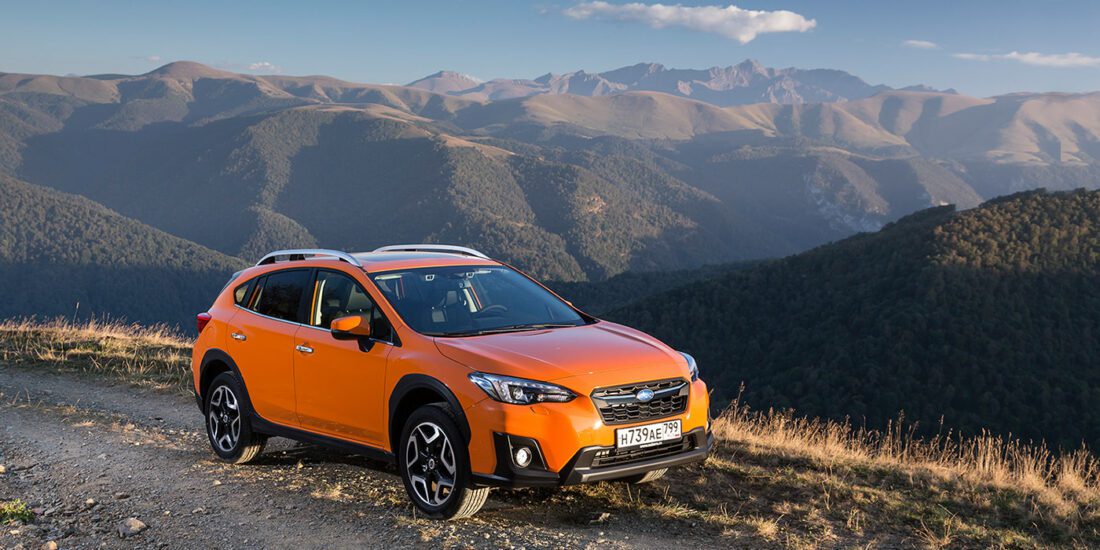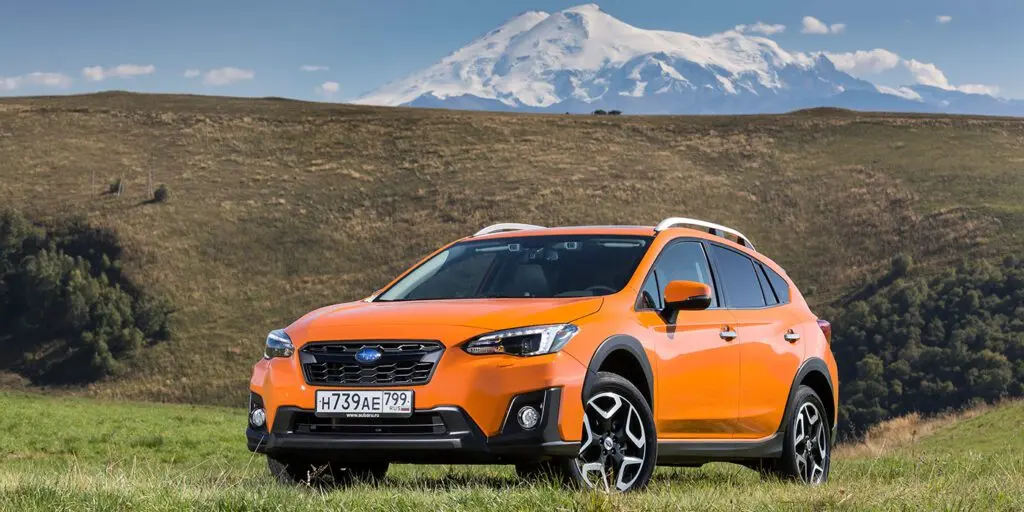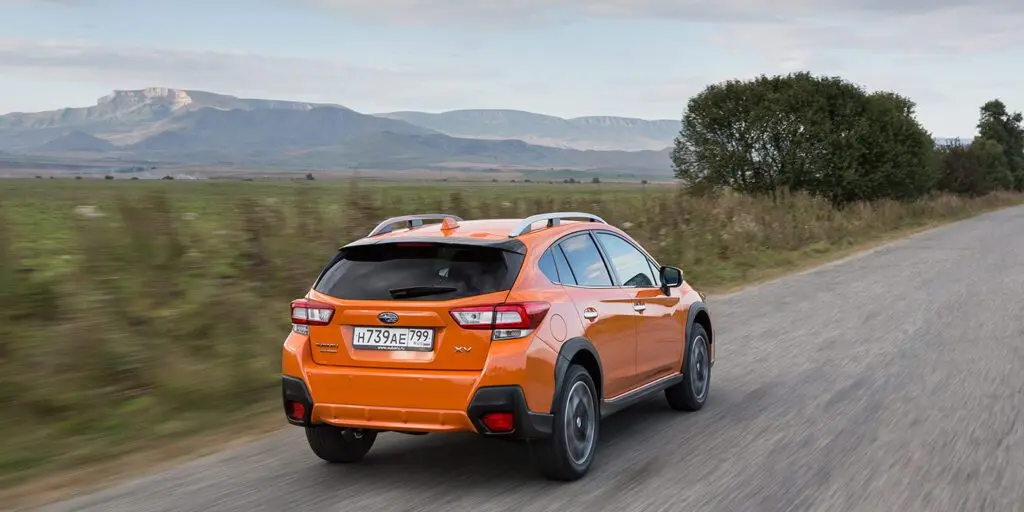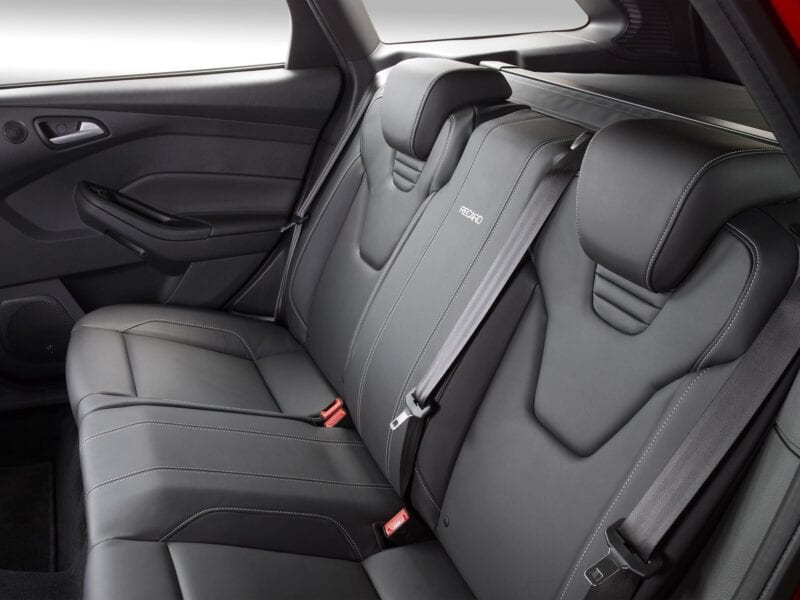
Test drive Subaru XV
You have to climb the mountains along a treacherous path with gullies. X-Mode Off-Road Assistant often chokes the engine so it is easier to shut it off. At the top we find ourselves in a thick cloud. And then the car goes blind
The presentation of the third generation Subaru XV began with a slide show with a new slogan "Created by engineers". The message is obvious: the corporate world is subject to the supremacy of technical solutions, on which the whole philosophy is literally constructed. And the emblem is just right to interpret as the constellation Subariad. The first star on it is the boxer engine, the second is the four-wheel drive, the third is the new SGP platform. Another star for sporting experience, fan loyalty and proud independence.
The fresh crossover XV was a manifesto of the brand's progress - it is the most advanced in the current range. And for clarity, the old car was brought to the Russian premiere. True, even next to its predecessor, the new one looks like the result of a successful restyling and nothing more. Well, a familiar look won't puzzle a loyal clientele. In fact, the third edition has been deeply revised.
The body has become 15 mm longer and 20 mm wider, the base is increased by 30 mm. In the cabin, the seats are slightly parted, the headroom has been added in the shoulders, it is freer at the feet of the driver and passengers of the second row. But behind, as before, there is an outstanding tunnel. And the trunk remained modest - 310 liters. Although the opening of the fifth door is slightly widened, the cargo maximum due to the base has grown to 741 liters.

The driver's seat is more interesting and richer: all key elements have changed for the better. There are new comfortable seats, a cool steering wheel with a smaller diameter and heated, a trio of screens (large instrument panel, "prompter" under glass and an 8-inch touchscreen), a media system with support for Subaru Starlink, Apple CarPlay and Android Auto, an electromechanical "handbrake" key instead of a lever , more efficient and quieter air conditioning system. And in general, sound insulation is good, and only road sounds break through.
The Japanese offer to look deeper into engineering. The current XV is the firstborn on the SGP global modular platform with a fixed relationship of the front axle, motor and pedal assembly. The body is categorically stiffer with the now integrated rear stabilizer. Rigidity was also added to the chassis design: the subframes, element mountings, and springs were changed. And to reduce vibrations, they installed other bearings, trunnions and reduced the vibrations of unsprung masses. The rear shock absorbers have a new valve system.
The center of gravity is lowered and the steering ratio is reduced by one to 13: 1. Plus the ATV thrust vector control system, which brakes the inner wheels in the turn. All for the pleasure of active driving.
At the same time, the crossover retains an enviable ground clearance of 220 mm, and the ramp angle is 22 degrees. The drive with a multi-plate clutch, which by default divides the torque by 60:40 in favor of the front axle, is complemented by the X-Mode system, which changes the operation of the motor, transmission and ESP according to the complexity of the situation. There is also an assistant when driving downhill.

Under the hood, there are 1,6 liter (114 hp) or 2,0 liter petrol boxers (derated up to 150 hp). The first with distributed injection, the second with direct, both with an increased compression ratio and a weight reduced by a dozen kilograms. The two-liter engine has been modified by as much as 80%. A lightweight variator with a power range extended due to short chain links, imitation of seven gears, without a sports mode, but with paddle shifters is offered to the motors.
We are in Karachay-Cherkessia, where there are enough roads for a crossover with ambitions. Having nimbled along the serpentines and gravel roads on the old XV, I return behind the wheel of a new one. Another thing! There is a minimum of swinging, the steering wheel is more accurate and with pleasant resistance, the reactions are sharper, and the weighty front end does not pull out so much. And drifts on gravel are more restrained and easier to control (ESP is also a driver's one with late actuation). The suspension's energy consumption is impressive, but its rigidity reverberates on small asphalt bumps.
It is a pity that the motor's capabilities are bland. Lazy starts (the variator takes care of itself), confident recoil not earlier than 2000 rpm, and with a sharp podgazovka tachometer needle every now and then throws to the excess 5000. But pleases the smoothness and efficiency of the box. And the manual mode is good: quasi-transmissions are "long" and are kept honest. And the average consumption for the onboard computer after the races was an acceptable 8,7 liters per 100 kilometers.
To be in the Caucasus and not to visit the mountains? You have to go to the peaks along a treacherous path with gullies. It turns out that the X-Mode off-road assistant often chokes the engine so that it is easier to turn it off, keep the throttle even and tolerate slippage, relying on the clutch's capabilities. At the top we find ourselves in a thick cloud. And then the car ... goes blind.
We are talking about the EyeSight system, which is responsible for adaptive cruise control, emergency auto-braking at speeds up to 50 km / h and tracking lane markings with corrective steering. They saved money on the frontal radars, and the visual organ is a stereo camera with two lenses under the windshield. In good conditions, EyeSight serves well, but in fog it loses its bearings (perhaps in a rainstorm or a blizzard, too). But the reverse movement is monitored by a conventional radar, and in case of interference, an automatic stop is guaranteed.
It's time to look at the price list. The basic version with a 1,6 liter engine provides daytime running lights and fog lights, light and rain sensors, a multifunction wheel, heated seats, mirrors and wiper rest zones, climate control, an electromechanical "handbrake", X-Mode, Start-stop systems and ESP, seven airbags, ERA-GLONASS and 17-inch alloy wheels. For all this they ask for $ 20.

Two-liter crossovers start at $ 22. It adds LED headlights, a heated steering wheel, split climate control, cruise control, and a rearview camera. For the EyeSight complex, you need to pay an additional $ 900. And the top version with a full set of auxiliary electronics, navigation, leather interior and electric seats, sunroof and 1-inch wheels pulls at $ 300.
But Subaru doesn't read the new XV bestseller either. The plan for next year is to sell 1 crossovers. The Japanese cherish the hope that among the wealthy Russian neophytes there are still those who are curious about engineering, who may be attracted by a constellation of corporate ideas.
| A type | Crossover (hatchback) | Crossover (hatchback) |
| dimensions (length / width / height), mm | 4465/1800/1595 | 4465/1800/1595 |
| Wheelbase, mm | 2665 | 2665 |
| Curb weight, kg | 1432 | 1441-1480 |
| engine's type | Petrol, 4-cyl., Opposed | Petrol, 4-cyl., Opposed |
| Working volume, cubic meters cm | 1600 | 1995 |
| Power, hp with. at rpm | 114 at 6200 | 150 at 6000 |
| Max. cool. moment, Nm at rpm | 150 at 3600 | 196 at 4000 |
| Transmission, drive | CVT permanent full | CVT permanent full |
| Maksim. speed, km / h | 175 | 192 |
| Acceleration to 100 km / h, from | 13,9 | 10,6 |
| Fuel consumption (mixture), l | 6,6 | 7,1 |
| Price from, USD | 20 600 | 22 900 |

